Pedal to the metal at the Digital Manufacturing Centre: Redefining what’s possible for AM in hypercars and beyond
This summer, a new player arrived on the AM scene: the Digital Manufacturing Centre, or DMC. Based on the edge of Silverstone, the UK's most famous race circuit, home to numerous leading F1 teams, there could be no better place to launch a business aimed at offering AM support to the elite in performance motorsport. Jim Hadfield speaks with the DMC's CEO, Kieron Salter, to explore how metal Additive Manufacturing is enabling innovation in the booming hypercar industry, and how a truly connected digital manufacturing operation can bring the DMC a competitive advantage in this field and more. [First published in Metal AM Vol. 7 No. 2, Summer 2021 | 20 minute read | View on Issuu | Download PDF]
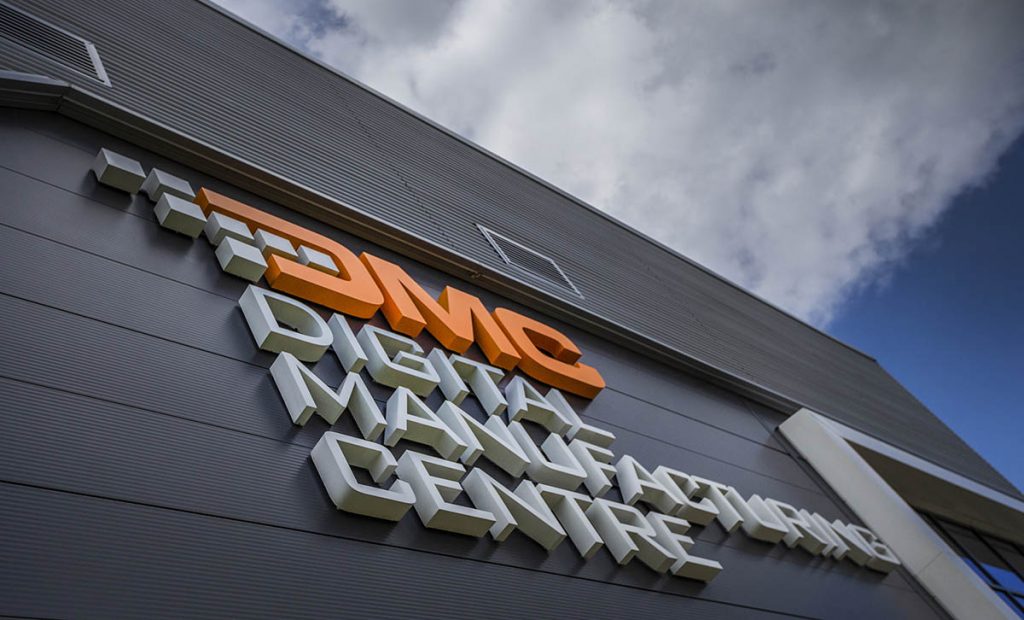
From exciting aerospace projects to new personalised medical devices, metal Additive Manufacturing has already demonstrated its capacity to meet the needs of demanding industries. While the wider automotive sector has embraced it in a limited capacity, primarily in prototyping, there is a rapidly growing niche for which metal AM is perfectly suited.
Combining breathtaking performance, incredible designs and state-of-the-art technology, the realm of hypercars is surreal. Not to be confused with sports cars – or even supercars – hypercars distinguish themselves through market-leading performance, rarity, and, of course, price. Here, limited-run vehicles can list well in excess of £2 million, and the discerning individuals purchasing them expect nothing less than exclusivity and automotive perfection.
It may come as a surprise that this is an expanding segment, too, with the global hypercar market expected to grow between 32 and 35% over the next five years (up to an estimated $90–110 billion in 2026). With such a promising outlook, the competition is growing fierce as established players and industrious startups innovate, sculpt bold new designs, and set new lap records to attract collectors, enthusiasts and high-net worth individuals from across the globe.
While many successful hypercar programmes will sell out their allocation before production begins, financial success is by no means guaranteed. Some projects undertaken by large, global automotive OEMs are never even intended to be profitable, instead aiming to assert the brand’s position and design language with a highly visible and marketed ‘halo’ model. However, with the rapid advance of low-volume production technology and the possibility of customisation, these programmes are now becoming increasingly profitable and popular.
Two worlds collide

One thing is for certain: the hypercar industry is in a league of its own. Closer to works of art than everyday vehicles, these cars represent the frontier of automotive technology and performance. While manufacturers may draw inspiration and innovations from horizontal sectors like motorsport, there are a host of other considerations for hypercar development.
“Race cars, by their very nature, are minimalist and purposeful – maximum performance in every respect,” explains Salter. “Compared to a road car, there is little focus on comfort or long-term reliability, as those have little bearing on a team’s ability to secure podiums and lucrative sponsorships. To your average motorist, a race car would feel stripped out, noisy, uncomfortable and utterly impractical – not to mention, illegal – on the road.”
“Hypercars, on the other hand, often deliver similar levels of performance to a race car while featuring modern comforts, a measure of practicality, and meet road design and safety requirements. This is no small feat; it is an incredible engineering accomplishment to see vehicles capable of travelling 300 miles per hour comfortably cruising through busy London streets. Of course, hypercars draw a lot of expertise and technology from motorsport, but it really is a whole new challenge.”
With a successful career establishing and running motorsport and engineering businesses, Salter was inspired by what he saw as a growing opportunity: the rise of Additive Manufacturing. With a broad scope of applications, AM showed immense promise in helping to solve engineering challenges. With support from a local growth fund, SEMLEP, Salter was able to realise his vision and the Digital Manufacturing Centre (DMC) at Silverstone, near Northamptonshire, UK, began early commercial operations in April 2021, launching officially in July.
Using connectivity to bring together metal and polymer AM systems with a host of additional services, the DMC serves a range of sectors from aerospace and defence to industrial. But its first customers are hypercar and motorsport manufacturers. “Compared to traditional automotive development programmes and production, hypercar manufacturers are often far more agile with an entirely different set of engineering priorities,” Salter states. “While well-known manufacturers in Germany and Italy have tended to dominate the space, we see it opening up significantly. There are successful high-performance electric vehicle (EV) hypercar startups and, equally, niche brands and brilliant engineers doing something bold and different.”
“Much of this comes down to the nature of the sector – world-class engineering, design and innovation are almost the basic essentials. With a high unit cost, it is possible to invest resources into R&D, creating new solutions and using novel materials,” he explains. “As you can imagine, at this level of performance there is a higher degree of engineering rigour and a desire to push the limits that doesn’t exist elsewhere in automotive. In this pursuit, the individual components truly matter, everything is considered. Why? Because to dominate this space requires a product that sets exceptional standards at the intersection of design, engineering, performance and luxury.”
The additive advantage
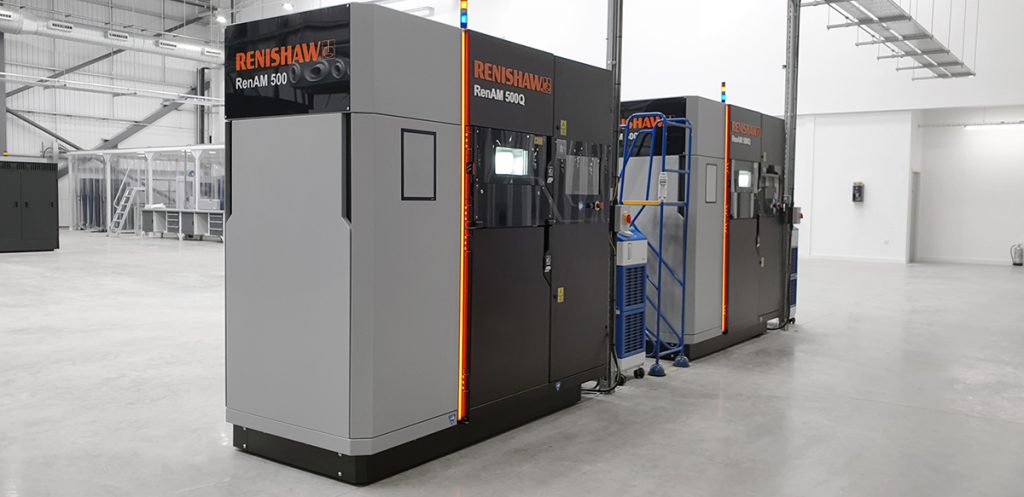
So, where does metal AM fit into the hypercar equation? What benefits does it deliver to a low-volume industry that is heavily reliant on carbon composites and subtractive manufacturing? Does it complement these existing technologies?
The first, and perhaps, most obvious advantage is in lightweighting. This megatrend has played an enormous role in the automotive industry over the past decade, as manufacturers look to make their vehicles more fuel-efficient. As you can probably surmise, its role in the hypercar sector serves a different purpose. Each kilogram that is shed helps to improve a vehicle’s handling and power-to-weight ratio. Not only does this mean that it will accelerate faster, but it will also decelerate and change direction more easily.
Another benefit to reducing vehicle mass is that you have the opportunity to add it back in. That sounds counterintuitive, but customers in the market for these vehicles often expect high levels of NVH (noise, vibration and harshness) management and interior comfort. So, there is a requirement for effective sound insulation, quality trim, air conditioning and high-quality audio systems.
“While high-performance composites like carbon fibre play a critical role in minimising weight and maximising stiffness, there are many metal components that simply cannot be replaced by composites,” explains Salter. “This is where we are seeing new and exciting applications for metal AM – helping to cut weight without any compromise to function or performance.”
“We are able to develop much lighter structures, minimising the amount of metal required for the part to perform its intended function,” he continues. “This is achievable in a number of ways, from hollowing components to utilising ‘bionic’ design. The end result is parts that could not feasibly be made by any other means. Unlike subtractive manufacturing, we can develop very specific designs to meet load and duty requirements, ensuring that we maintain strength in the right places while cutting mass everywhere else. Essentially, we put the material where we need it, rather than attempting to remove it post-manufacture.”
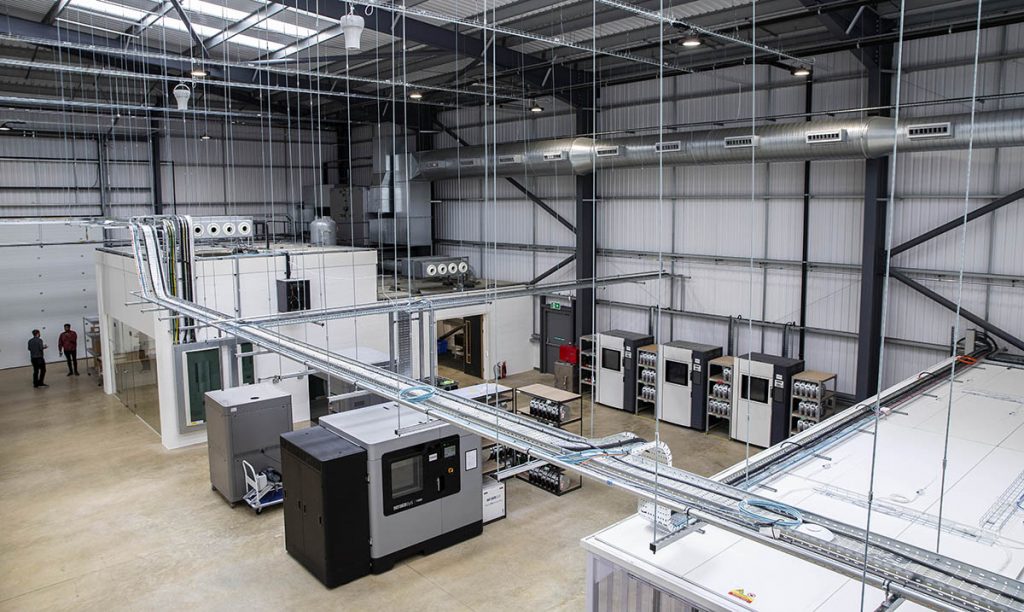
“There is, however, a requirement that advanced manufacturing engineers be involved from the beginning,” he added. “The primary advantage being that additive engineers will be able to help design the component for application as well as manufacture, thus ensuring an optimal solution. This was one of the core ideas behind the DMC, an engineering-led production facility – it is an approach that has already proven its value in a number of early customer projects.”
It is not just hidden components either: visible and tactile areas of the vehicle have also been given the metal AM treatment. In one of the DMC’s recent customer projects, the team replaced billet aluminium grab handles with hollow versions that were visually identical from the outside. How? By designing for metal AM from the inside – in other words, the engineers included an internal lattice structure to reinforce the part. Not only was the resulting part 55% lighter, it met the same performance criteria as the original design with a matching surface finish.
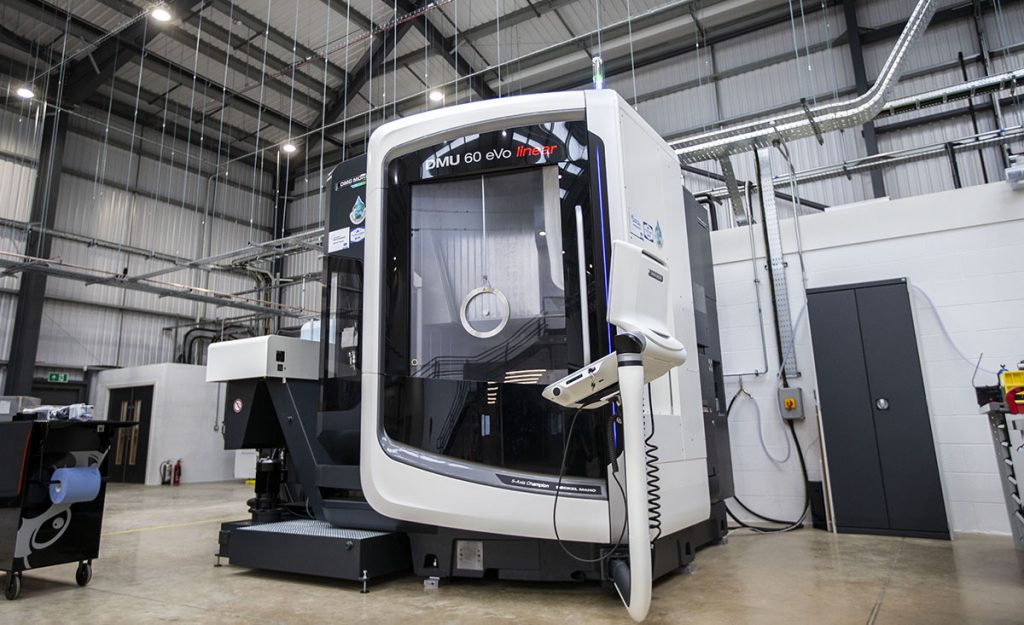
An ideal solution and new applications
While the performance appeal is clear, why is metal AM in particular so well suited to these high-performance road car applications? Salter says that three main factors dictate the ability of modern metal AM to meet the hypercar sector’s requirements: production volume, production rate, and cost per part. With production runs in the region of 20–500 vehicles, there is a fundamental need to think differently to mainstream automotive programmes.
“When you’re making limited-run, low-volume vehicles, there are economic restrictions on the manufacturing processes available to you,” he explained. “Conventional tooling is incredibly expensive, limiting a manufacturer’s ability to produce bespoke parts for a unique vehicle. AM requires no tooling, making it great for low volume – it has a minimum order quantity of one part. In that sense, metal AM is a revolutionary process for the hypercar sector. Taking the full product lifecycle into consideration, we can cost-effectively deliver the required part volumes and to a very high quality standard while maximising the aforementioned performance advantages. ”
Salter is quick to point out another important benefit of metal AM in high-performance road applications: the ability to produce on-demand spare parts. “We are not talking about your average five-door hatchback here; these are expensive vehicles made in limited numbers, and that justifies a different approach to aftersales servicing and support. Using AM, manufacturers can meet the demand for spare parts in a far more effective manner, with tool-free, on-demand component production.
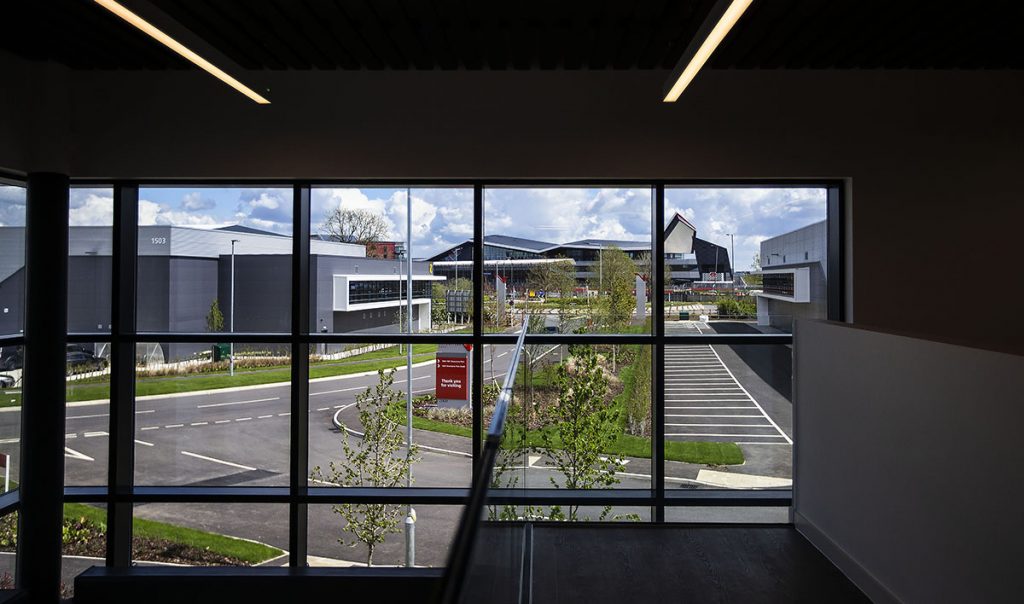
“Metal AM streamlines part supply, eliminates the need for inventory and warehousing, while simultaneously ensuring that a model can remain supported by the manufacturer indefinitely. All you need is to protect and preserve the digital assets – CAD and manufacturing data. With customers all over the world, it also reduces logistics requirements; hypercar manufacturers could have a metal AM supplier in each of their key markets, for example.”
Another application Salter mentions is the use of metal AM in support of legacy models and classic vehicles, a concept already embraced by one of the world’s largest vehicle manufacturers. Indeed, Volkswagen Group has been using metal AM to reproduce the gearstick for the iconic Porsche 959 and water connectors for the Audi W12 engine since 2018. With spares for many classic vehicles extremely limited and support long since ended, this is certainly a market in need of supply.
“We have all seen the value of classic vehicles skyrocket over the past few decades, with many sports and luxury vehicle brands eager to service their heritage models,” Salter notes. “Metal AM suppliers like the DMC are in a perfect position to help these manufacturers support their customers with on-demand part production – no tooling costs and minimal lead times.”
Changing times and the electric future
So, there are applications for past vehicles, but what about looking to the future? Even the hypercar market is feeling the pressure of legislation and the UK ban on internal combustion engine (ICE) vehicles by 2030. The rise of electrification will undoubtedly result in additional pressure to make cars lighter, thereby maximising efficiency and range. Salter sees this as simply another challenge for the hypercar sector and suppliers like the DMC.
“We are fortunate to live in an exciting period of change,” he states. “The drive to reduce emissions is having a major impact on the automotive industry and the long-term prosperity of manufacturers depends entirely on their ability to adapt. I think this will be far easier for agile hypercar manufacturers and hypercar programmes – those accustomed to working at the leading edge.
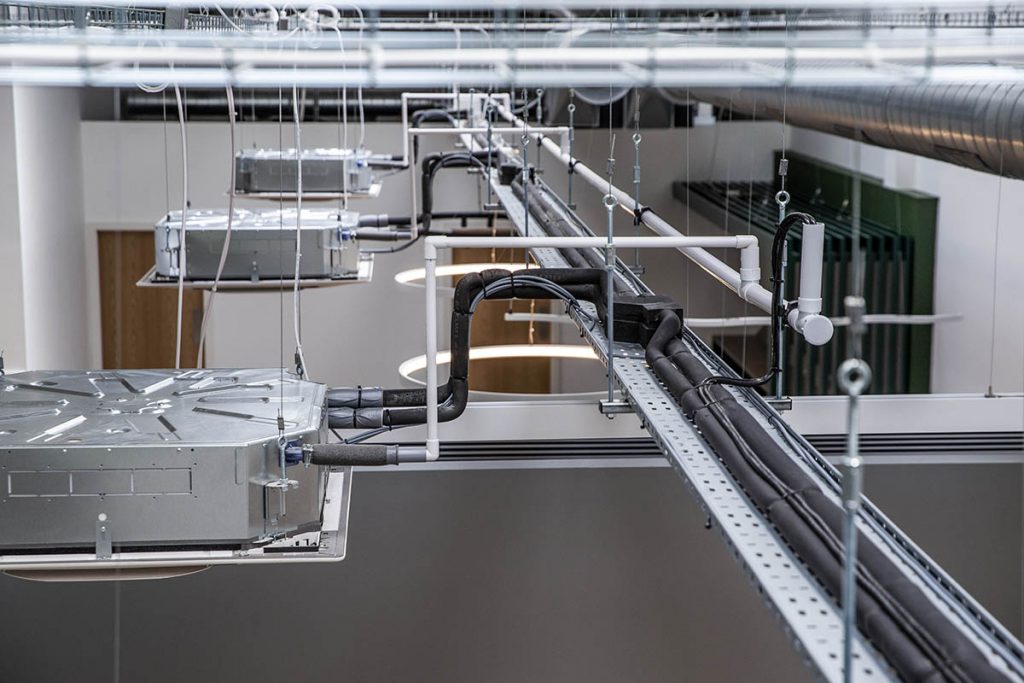
“If we are already using metal AM to solve challenges in hypercar design and production, then, given the passage of time, the progress of technology and stricter emissions legislation, it follows that metal AM will have a more important role to play. There are a multitude of promising applications in the EV space, from lighter motors to new motor manufacturing processes, extremely efficient heat exchangers, novel battery design, and so on. AM has the potential to solve a lot of our future transport needs. Whether it can evolve to a point where cost and volumes will enable widespread, mainstream automotive adoption is another question. That being said, we are now producing parts at volumes thought improbable, if not impossible, a decade ago.”
Contact
Digital Manufacturing Centre
Silverstone Park
Silverstone
Towcester NN12 8FU
United Kingdom
Tel: +44 1327 636 800
[email protected]
www.digitalmanufacturingcentre.com
DMC: Putting connectivity at the centre of operations
The DMC is the first company to adopt Renishaw Central, a new manufacturing connectivity and data platform from the UK’s Renishaw PLC, across its complete AM and subtractive manufacturing operations. The ongoing close collaboration between the two companies has evolved from Renishaw supplying the DMC with metal AM machines, followed by several of its metrology solutions, and now the implementation of this digital platform.
“A key focus of the DMC is connectivity – bringing together data from across our processes to ensure customers receive the best possible solution,” stated Salter. “From improving our efficiency to enhancing part design, our objectives rely on exceptional engineering and the meaningful interpretation of useful data.”
“Renishaw Central enables us to not only connect our Renishaw AM and metrology equipment, but also provides a platform via which we can connect other equipment – like machining systems – to achieve complete end-to-end capability. This plays an important part in helping us realise the potential of additive manufacturing, allowing for the creation of a true Digital Twin and the implementation of advanced algorithms to adapt processes and parts in real-time without human input.”
With the intention of helping to drive the future of AM by realising a fully-connected process chain, the DMC is leveraging actionable data to deliver a step-change in manufacturing capability. Renishaw Central will play a crucial role in this ambition and enable the DMC to embrace Industry 4.0 practices and principles; not only will the platform provide end-to-end manufacturing data capture, but it will also allow the DMC’s engineers to further refine part design and processes by effectively implementing capabilities including predictive analytics and artificial intelligence (AI).
Renishaw Central’s automated data collection brings together information from across the process chain, including AM systems, on-machine measurements, shopfloor gauging and co-ordinate measuring machines (CMMs). It uses process, metrology and device information to provide a single, intricate view of a manufacturing facility’s data, including visualisation and reporting – an invaluable resource for engineers.
This data can then be used in applications for process automation or via Renishaw Central’s new application programming interface (API) to inform product lifecycle management (PLM) and design optimisation, shopfloor monitoring systems and more advanced applications, like using algorithms to establish predictive analytics and the implementation of AI systems.
Through Renishaw Central, the DMC hopes to further improve its production intelligence by using data from all available sources to provide superior control of upstream processes. With end-to-end data collected across a number of operations, cells and time periods, it provides all the necessary information to allow for true continuous improvement. By characterising acceptable process trends and performance, the DMC will be able to predict, identify and correct errors and deviations as quickly as possible.
With shorter feedback loops, Renishaw Central will enable the DMC to react and adjust its processes to increase machine utilisation and reduce waste. Equipped with actionable metrology data from throughout the process chain, the DMC’s design and process engineers will also be able to enhance product design, process performance and resulting part quality.
“Most manufacturers already have access to a wealth of metrology data, but how often is it fully utilised?” asked Jonathan Archer, General Manager, Renishaw. “Renishaw Central helps to employ this data in a meaningful way, providing the right data at the right time to better understand production and facilitate improvements. The DMC has been an important collaborator in developing – and now deploying – Renishaw Central, helping us to address significant pain points within advanced manufacturing.”
“We believe that the DMC is best placed to exploit the platform’s full potential. The facility’s ambition is the practical implementation of connected technologies, AI and the realisation of Industry 4.0 – these rely on the collection and application of data, for which Renishaw Central will play a critical role.”







